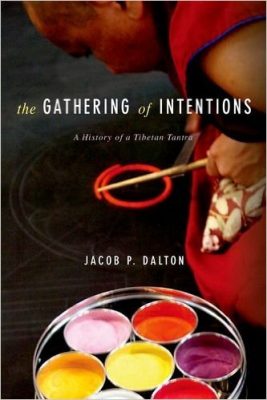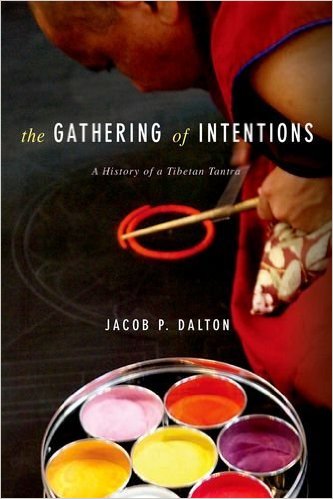 Author: Jacob P. Dalton
Author: Jacob P. Dalton
Publisher: Columbia University Press – 246 pages
Book Review by: Paiso Jamakar
For those unfamiliar with Tantrism, a tantra, as defined in Wikipedia, is “an ancient Indian tradition of beliefs, meditation, and ritual practices that seeks to channel the divine energy of the macrocosm or godhead into the human microcosm, to attain siddhis and moksha.”
Siddhis are spiritual, paranormal, supernatural, or otherwise magical powers, abilities, and attainments that are the products of spiritual advancement through sādhanās (ego-transcending activities) such as meditation and yoga.
Moksha is a term in Hinduism and Hindu philosophy which refers to various forms of emancipation, liberation, and release. A Wikipedia article on moksha informs us: “In its soteriological and eschatological senses, it refers to freedom from saṃsāra, the cycle of death and rebirth.”
Tibet, located north of India and south of China, has had a long history of cultural influence from both these countries.
This book, a very valuable contribution to the study of Tibetan Buddhism, traces the historical role of a Tibetan tantra, taking us on an important and insightful journey. Its content is laid out in an Introduction and seven chapters:
- Introduction
- Origins: Myths and History
- The Gathering of Intentions in Early Tibetan Tantra
- The Spoken Teachings
- The Rise of the Sutra Initiation
- Dorje Drak and the Formation of a New Lineage
- The Mindrolling Tradition
- Returns to the Origin
This work is not only for students of Buddhism, but also for the general public, because it has been written in easy-to-understand English. It provides 60 pages of notes and a 10-page glossary of terms for those who want to get a better understanding of the subject.
From reading its inside flap, we learn that this book takes a look at “a single Tibetan Buddhist ritual system (a tantra) through the movements of Tibetan history, revealing the social and material dimensions of an ostensibly timeless tradition.” Through this historical analysis, we discover that this book offers insight into:
- The origins of Tibetan Buddhism
- The formation of its canons
- The emergence of new lineages and ceremonies
- The modern efforts to revitalize the religion by returning to its mythic past
An attempt to learn about Tibetan Buddhism begins with reading about the tantras and the rituals that are associated with it. Tantras are an integral part of Tibetan Buddhism, but the numerous and myriad tantric ritual systems that are found in literature can be overwhelming, if one is to decide where to begin. Some of them are very elaborate and esoteric. This book is an important guide in that journey, if you decide to take it.
Author:
Jacob P. Dalton is Khyentse Foundation Distinguished University Professor in Tibetan Buddhism in the Departments of East Asian Languages and Cultures and South and Southeast Asian Studies at the University of California, Berkeley. He is also the author of Taming of the Demons: Violence and Liberation in Tibetan Buddhism.







